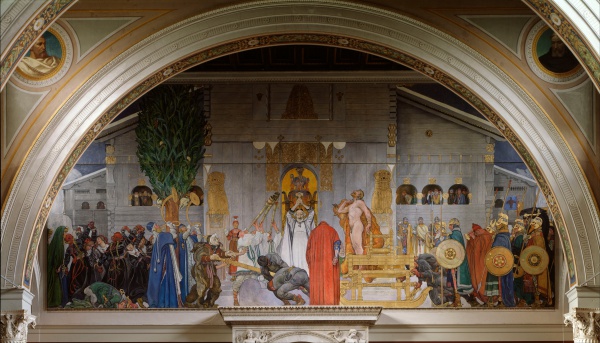Facts About Midvinterblot
"Midvinterblot" is a painting by Swedish artist Carl Larsson, completed in 1915, that has sparked considerable debate over the years. The artwork, intended for the Nationalmuseum in Stockholm, depicts a Norse legend in which the Swedish king Domalde is sacrificed to stave off famine. Initially, Larsson's proposal to adorn the museum's central staircase with this piece was met with rejection due to concerns over its subject matter and perceived historical inaccuracies.
Drawing inspiration from Norse mythology and historical narratives, Larsson revised the painting multiple times in response to criticism. Despite facing opposition from critics and museum officials, Larsson remained steadfast in his artistic vision. The controversy ultimately led him to resign from the project in 1914.
Years later, in the 1980s and 1990s, "Midvinterblot" re-emerged in exhibitions, sparking renewed debate. After changing hands several times, the Nationalmuseum finally acquired the painting in 1997 and showcased it as Larsson had originally intended. This marked a significant shift in public opinion, recognizing Larsson's work in a new light.
The journey of "Midvinterblot" from rejection to acceptance highlights evolving attitudes towards art, historical representation, and artistic freedom. Larsson's dedication to his vision and his willingness to tackle controversial themes ultimately led to the painting's recognition as an important piece of Swedish art.

 Norway
Norway